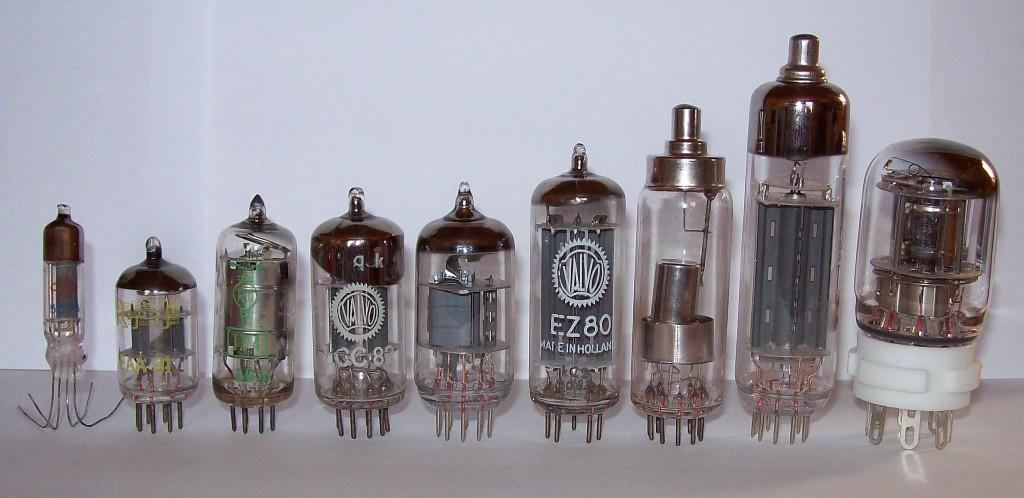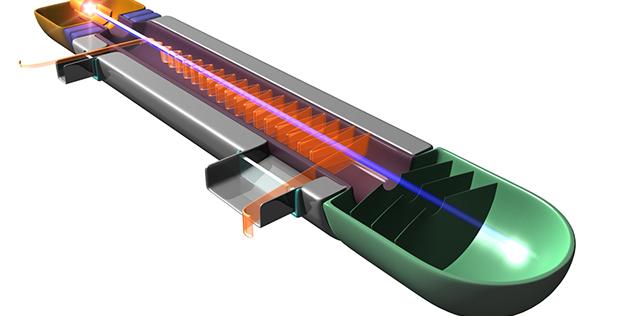It seems that old ideas never die…they just get 3D printed. At least this is what is happening in the case of vacuum tubes, an idea that revolutionized the world only to later be replaced by solid state electronics. However, it turns out that if something was brilliant at one time, there’s usually some chance that it will get to hit a high note again.
When vacuum tubes were first introduced in 1904 by their inventor John Fleming they quickly became a basic component of the electronics in radios, televisions, and a number of other devices. They played an essential role in the development of the first computers such as the ENIAC which required 17,468 separate tubes in order to function. Since then, they have also featured in any number of television and movie depiction as the necessary props for anything related to high tech or mad scientists.
 Today, you’re more likely to find vacuum tubes in a microwave than just about anywhere else in your daily life. However, they do continue to play a large role in equipment owned and used by the Department of Defense which currently employs more than 200,000 vacuum electronic devices (VEDs) to power critical communications devices and a variety of other radar systems. In other words, there’s still a certain amount of interest in them.
Today, you’re more likely to find vacuum tubes in a microwave than just about anywhere else in your daily life. However, they do continue to play a large role in equipment owned and used by the Department of Defense which currently employs more than 200,000 vacuum electronic devices (VEDs) to power critical communications devices and a variety of other radar systems. In other words, there’s still a certain amount of interest in them.
 As such, the Defense Advanced Research Projects Agency (DARPA) is interested in the advancement of these VEDs and is beginning to look into the possibilities that have been presented through the use of 3D printing technologies. The question that arises then is this: would it make more sense to produce more sophisticated semi-conductor technologies rather than invest in increasing the production of an older vacuum tube-based technology?
As such, the Defense Advanced Research Projects Agency (DARPA) is interested in the advancement of these VEDs and is beginning to look into the possibilities that have been presented through the use of 3D printing technologies. The question that arises then is this: would it make more sense to produce more sophisticated semi-conductor technologies rather than invest in increasing the production of an older vacuum tube-based technology?
It seems that in this case, there is a strong argument for going high-tech on a lower-tech piece of equipment. Dev Palmer, program manager for INVEST in DARPA’s Microsystems Technology Office (MTO), explained why:
“The worldwide availability and proliferation of inexpensive, high-power commercial amplifiers and sources has made the electromagnetic spectrum crowded and contested in the radio frequency (RF) and microwave regions. Any time you need to operate at the outer reaches of the power-frequency parameter space, vacuum tubes are the technology of choice, but at the high millimeter-wave frequencies of interest to this program, the design and construction of VEDs is an intricate, labor-intensive process that requires exquisite modeling tools, exotic materials, and expensive, high-precision machining.”
 And that’s where 3D printing comes in to play. The latest research into vacuum tube technologies is investigating millimeter-wave frequencies above 75 GHz. These tubes are minuscule in size and yet are required to be constructed with the type of absolute precision that is one of the primary advantages of 3D printing.
And that’s where 3D printing comes in to play. The latest research into vacuum tube technologies is investigating millimeter-wave frequencies above 75 GHz. These tubes are minuscule in size and yet are required to be constructed with the type of absolute precision that is one of the primary advantages of 3D printing.
“As you push frequencies up, you can’t use conventional manufacturing techniques anymore,” said Palmer. “If you could print the whole structure with a 3-D printer, so that everything was aligned right off the assembly line, it would make it much easier.”
DARPA has started a new research initiative and is currently awarding funding for investigation of the possibilities for creating this next generation of tiny VEDs. Innovative Vacuum Electronic Science and Technology (INVEST) will be providing grant contracts for the performance of this fundamental research that will advance the engineering know-how needed for the realization of this vision.
What do you predict will be next in bringing high-tech capabilities to old school technologies? Do vacuum tubes still have a place? Join the discussion in the 3D Printed Vacuum Tube Research forum thread at 3DPB.com.
Subscribe to Our Email Newsletter
Stay up-to-date on all the latest news from the 3D printing industry and receive information and offers from third party vendors.
You May Also Like
Profiling a Construction 3D Printing Pioneer: US Army Corps of Engineers’ Megan Kreiger
The world of construction 3D printing is still so new that the true experts can probably be counted on two hands. Among them is Megan Kreiger, Portfolio Manager of Additive...
US Army Corps of Engineers Taps Lincoln Electric & Eaton for Largest 3D Printed US Civil Works Part
The Soo Locks sit on the US-Canadian border, enabling maritime travel between Lake Superior and Lake Huron, from which ships can reach the rest of the Great Lakes. Crafts carrying...
Construction 3D Printing CEO Reflects on Being Female in Construction
Natalie Wadley, CEO of ChangeMaker3D, could hear the words of her daughter sitting next to her resounding in her head. “Mum, MUM, you’ve won!” Wadley had just won the prestigious...
1Print to Commercialize 3D Printed Coastal Resilience Solutions
1Print, a company that specializes in deploying additive construction (AC) for infrastructure projects, has entered an agreement with the University of Miami (UM) to accelerate commercialization of the SEAHIVE shoreline...





























